Psychology > QUESTIONS & ANSWERS > CHCECE001 Develop cultural competence CHCDIV002 Promote Aboriginal and/or Torres Strait Islander cul (All)
CHCECE001 Develop cultural competence CHCDIV002 Promote Aboriginal and/or Torres Strait Islander cultural safety Theory Assessment Task
Document Content and Description Below
CHCECE001 Develop cultural competence CHCDIV002 Promote Aboriginal and/or Torres Strait Islander cultural safety Theory Assessment Task CHCECE001 Develop cultural competence CHCDIV002 Pro... mote Aboriginal and/or Torres Strait Islander cultural safety Theory Assessment Task Unit Purpose This unit co-assesses CHCECE001 and CHCDIV002. The assessment tasks within this unit provide you with the opportunity to demonstrate evidence of the knowledge and skills required to enable you to work with Aboriginal and Torres Strait Islander people, including identifying cultural safety issues in the workplace, modelling cultural safety in your own work practices and developing strategies to enhance cultural safety. The assessment tasks also provide you with the opportunity to demonstrate evidence of the required knowledge and skills to address duty of care requirements as well as work within an ethical framework, and apply relevant legislation, policies and procedures in responding to children and young people. Elements – CHCECE001 Develop cultural competence The following elements define the essential outcomes of this unit: r Element 1 Reflect on own cultural identity and biases r Element 2 Identify and develop cultural competency r Element 3 Research Aboriginal and/or Torres Strait Islander communities r Element 4 Support individual cultural identities r Element 5 Create environments to support children’s cross-cultural understanding and relationships r Element 6 Support the implementation of inclusive learning experiences r Element 7 Support children in developing confidence and strength in personal and cultural identityCHCECE001 Develop cultural competence and CHCDIV002 Promote Aboriginal and/or Torres Strait Islander cultural safety. Theory Tasks. 2 Early Childhood Education and Care. © ICCC Resources 2015. V4. Elements – CHCDIV002 Promote Aboriginal and/or Torres Strait Islander cultural safety The following elements define the essential outcomes of this unit: r Element 1 Identify cultural safety issues in the workplace r Element 2 Model cultural safety in own work r Element 3 Develop strategies for improved cultural safety r Element 4 Evaluate cultural safety strategies Assessment Requirements • 001: Cultural Competence • 002: Cultural Identity and Bias • 003: Aboriginal and/or Torres Strait Islander Cultural Identity • 004: Aboriginal and/or Torres Strait Islander Cultural Realities • 005: Inclusion in the Workplace • 006: Communicate Effectively • 007: Anti-BiasCHCECE001 Develop cultural competence and CHCDIV002 Promote Aboriginal and/or Torres Strait Islander cultural safety. Theory Tasks. 3 Early Childhood Education and Care. © ICCC Resources 2015. V4. Required Readings In order to complete this unit of competency you are required to access the following key resources. Textbook • Kearns, K. (2014). The Big Picture: Working in Early Childhood Education and Care Series (3rd ed.). Victoria: Cengage Learning Australia. Core Documents • Belonging, Being and Becoming: The Early Years Learning Framework for Australia. (2009). Australian Government Department of Education, Employment and Workplace Relations. Canberra: DEEWR. • Code of Ethics. (2014). Early Childhood Australia. Retrieved from: http://www.earlychildhoodaustralia.org.au/wpcontent/uploads/2014/07/code_of_ethics_brochure_print_2010.pdf Additional Readings for this Unit • Aboriginal Cultural Competence Framework: Culture and the child and family services system. (2008). Retrieved from: http://www.dhs.vic.gov.au/__data/assets/pdf_file/0011/580934/Aboriginal_cultural_competenc e_2008.pdf • Aboriginal and Torres Strait Islander Children’s Cultural Needs. (2012). SNAICC. Retrieved from: http://www.snaicc.org.au/_uploads/rsfil/02932.pdf • Aboriginal and Torres Strait Islander: Social and Emotional Wellbeing. (2005). Commonwealth of Australia. Response ability. Retrieved from: http://www.responseability.org/__data/assets/pdf_file/0007/4795/Aboriginal-and-Torres-StraitIslander-Social-and-Emotional-Wellbeing.pdf • Australia – A national overview. Bringing Them Home. Australian Human Rights Commission. (2010). Retrieved from: https://www.humanrights.gov.au/sites/default/files/content/education/bringing_them_home/Indi vidual%20resources%20and%20activities/10_RS_Australia_overview.pdf • Becoming culturally competent – ideas that support practice. (2013). NQS PLP e-Newsletter No. 65. Retrieved from: http://www.earlychildhoodaustralia.org.au/nqsplp/wpcontent/uploads/2013/10/NQS_PLP_E-Newsletter_No65.pdf (Accessed April, 2015). • Cultural Connections Booklet. (2009). Child Australia. Professional Support Coordinator. Northern Territory. Retrieved from: https://childaustralia.org.au/Documents/IPSP-Section/ResourceCentre-Docs/cultural-book-complete-WEB.aspx (Accessed April, 2015).CHCECE001 Develop cultural competence and CHCDIV002 Promote Aboriginal and/or Torres Strait Islander cultural safety. Theory Tasks. 4 Early Childhood Education and Care. © ICCC Resources 2015. V4. • Difference between Aboriginal and Torres Strait Islanders. (2011). Retrieved from: http://www.differencebetween.com/difference-between-aboriginal-and-vs-torres-straitislanders/ (Accessed April, 2015). • Diversity and children’s mental health.(n.d.). Kids Matter. Information for families and early childhood educators. Component 1 – Creating a sense of community. Australian Government Department of Health and Ageing. Retrieved from: https://www.kidsmatter.edu.au/sites/default/files/public/KM%20C1_Cultural%20Diversity_Diver sity%20and%20Children%27s%20Mental%20Health.pdf (Accessed April, 2015). • Planning for a Multicultural Child Care Environment Checklist. (2012). Inclusive Directions. Retrieved from: http://directions.org.au/wp-content/uploads/2013/08/Planning-for-aMulticultural-Child-Care-Environment.pdf (Accessed April, 2015). • Protocols: Communicating with Aboriginal and Torres Strait Islander People. Adapted from: - Communicating Positively. A guide to appropriate Aboriginal terminology (2004). NSW Department of Health North Sydney. Retrieved from: http://www.health.nsw.gov.au/aboriginal/Publications/pub-terminology.pdf (Accessed April, 2015). • Understanding Culture. (2005). Zion, S., Kozleski, E., & Fulton, M. National Institute for Urban School Improvement. Retrieved from: http://www.sst13.org/wpcontent/uploads/2015/04/Understanding-Culture.pdf • Using Translating and Interpreting Services in Early Childhood Services. (2011). Diversity in Practice. Tip Sheet 4. Retrieved from: http://www.resourcingparents.nsw.gov.au/ContentFiles/Files/diversity-in-practice-tipsheet- 4.pdf (Accessed April, 2015). • Welcoming conversations with culturally and linguistically diverse families – An Educators Guide. (2012). Child Australia. IPSP. Retrieved from: http://www.childaustralia.org.au/Documents/IPSPSection/Bicultural/WelcomingConversationsGuideWEB.aspx • What is cultural safety? (2012). SNAICC. Retrieved from: http://www.supportingcarers.snaicc.org.au/connecting-to-culture/cultural-safety/ • Working with Aboriginal People and Communities – A Practice Resource. (2009). NSW Department of Community Services. Ashfield, NSW. Retrieved from: http://www.community.nsw.gov.au/docswr/_assets/main/documents/working_with_aboriginal .pdfCHCECE001 Develop cultural competence and CHCDIV002 Promote Aboriginal and/or Torres Strait Islander cultural safety. Theory Tasks. 5 Early Childhood Education and Care. © ICCC Resources 2015. V4. Recommended Websites • NAIDOC: http://www.naidoc.org.au/about • National Aboriginal and Torres Strait Islander Children’s Day: http://aboriginalchildrensday.com.au/ • Timeanddate.com: http://www.timeanddate.com/holidays/australia/national-sorry-day Assessment Instructions Students are required to provide appropriate responses to the indicated questions. Assessment Outcomes The Early Childhood Education and Care training packages are vocational qualifications that are competency based. For each assessment undertaken you will be assessed as Satisfactory, Not Yet Satisfactory or Incomplete. Where students are assessed as ‘Not Yet Satisfactory’ or ‘Incomplete’ the trainer/assessor will provide the student with feedback and guidance regarding what needs to be completed for resubmission. Student Appeals Students have the right to appeal an unfavourable decision or finding during assessment. All students appeals must be made in writing using the Appeals Form and specify the particulars of the decision or finding in dispute. Appeals must be lodged within 28 days of the decision or finding.CHCECE001 Develop cultural competence and CHCDIV002 Promote Aboriginal and/or Torres Strait Islander cultural safety. Theory Tasks. 6 Early Childhood Education and Care. © ICCC Resources 2015. V4. 001 Cultural Competence CHCECE001 Develop cultural competence and CHCDIV002 Promote Aboriginal and/ or Torres Strait Islander cultural safety CHCECE001 Develop cultural competence Element 1 Reflect on own cultural identity and biases Element 2 Identify and develop cultural competency Element 3 Research Aboriginal and/or Torres Strait Islander communities Element 4 Support individual cultural identities Element 5 Create environments to support children’s cross-cultural understanding and relationships Element 6 Support the implementation of inclusive learning experiences Element 7 Support children in developing confidence and strength in personal and cultural identity Performance Evidence Knowledge Evidence CHCDIV002 Promote Aboriginal and/or Torres Strait Islander cultural safety Element 1 Identify cultural safety issues in the workplace Element 2 Model cultural safety in own work Element 3 Develop strategies for improved cultural safety Knowledge Evidence Question 1 To complete this task refer to your reading: • Becoming culturally competent – ideas that support practice. a) List the guiding principles of the National Quality Framework (NQF) making explicit attention to diversity as a matter of principle, policy and action List the guiding principles of the National Quality Framework (NQF) making explicit attention to diversity as a matter of principle, policy and action. How is cultural competence defined in the Early Years Learning Framework (EYLF)? What is considered to be the most important reason to pay attention to cultural competence? List the three key words used in the EYLF that reflect support children’s cultural identity and relationships within the family. How is respecting diversity explained in the EYLF? What curriculum decisions are made by educators to uphold diversity? List six ways educators can promote respect for diversity What four strategies can educators use to create a welcoming space for families with English as a second language when tList six visual aids and/or communication strategies that could be used to build relationships with families for whom English is a second language during the orientation process at the service hey first enter the service? Provide three strategies that can be used to assist families to work in partnership with the service? List six ways educators could encourage children to explore other cultures in the outdoor play environment. Identify eight practical tips educators may consider when working with families for whom English is a second language. 002 Cultural Identity and Bias CHCECE001 Develop cultural competence and CHCDIV002 Promote Aboriginal and/ or Torres Strait Islander cultural safety CHCECE001 Develop cultural competence Element 1 Reflect on own cultural identity and biases Element 2 Identify and develop cultural competency Element 7 Support children in developing confidence and strength in personal and cultural identity Performance Evidence Knowledge Evidence CHCDIV002 Promote Aboriginal and/or Torres Strait Islander cultural safety Element 1 Identify cultural safety issues in the workplace Element 2 Model cultural safety in own work Knowledge Evidence Question 1 To complete this task refer to (p. 211) of your textbook ‘The Big Picture’. a) How is culture defined by the National Centre for Cultural Competence? Describe the meaning stereotyping in relation to culture? Write up to five words to describe your self-identity - choose words that reflect who you are –your self-dimension, your cultural beliefs and values. Describe one value that you hold as an adult that can be directly attributed to your upbringing. Reflect and comment on why this value has stayed with you into adulthood. Describe your best personal attribute. Now describe how this attribute contributes to your self-identity. Describe a tradition or ritual that is practiced by you and/or your family. Reflect on the meaning of this ritual and describe how it contributes to your self-identity. Imagine you have been transported to a place in the world where the culture - language, traditions, values, beliefs and practices, food, dress, gender roles, religious beliefs, individual rights, family roles and child rearing practices are completed different to your own. You are required to live in this place for six months without any contact with your home or family. i. Describe how you might feel. What would you miss most? What assistance would you like from your new community to help you settle in and feel safe? In around half a page describe how you might translate this self-reflection to your work with children and families from a culture different to your own. Listed below are the environmental factors that influence our cultural identity. Explain the meaning of each factor. Explain the term ‘cultural responsivity’. List the ten ways in which educators (practitioners) can become culturally responsive 003 Aboriginal and/ or Torres Strait Islander Cultural Identity CHCECE001 Develop cultural competence and CHCDIV002 Promote Aboriginal and/ or Torres Strait Islander cultural safety CHCECE001 Develop cultural competence Element 1 Reflect on own cultural identity and biases Element 2 Identify and develop cultural competency Element 3 Research Aboriginal and/or Torres Strait Islander communities Element 4 Support individual cultural identities Element 5 Create environments to support children’s cross-cultural understanding and relationships Element 6 Support the implementation of inclusive learning experiences Element 7 Support children in developing confidence and strength in personal and cultural identity Performance Evidence Knowledge Evidence How are Aboriginal and Torres Strait Islander people defined? List the three key factors that should be considered when exploring concepts of Aboriginal and Torres Strait Islander wellbeing. Provide an example for each of the following impacts on the Aboriginal and Torres Strait Islander people due to the European settlement. Living in situations of homelessness, poverty or unemployment increases the severity of physical and mental illnesses. List four factors, which contribute to the increase of physical and mental illness of Aboriginal and/or Torres Strait Islander individuals and communities? List three factors that contribute to Aboriginal and/or Torres Strait Islander children being at high risk of emotional or behavioural difficulties? Give two examples of taboos or traditions of Aboriginal and/or Torres Strait Islander people that may be different from non-Aboriginal and/or Torres Strait Islander people. How long have Aboriginal people and their ancestors occupied Australia? What is the significance of the European doctrine of terra nullius in relation early colonisation and Aboriginal Land Rights? What were the two key policies adopted by the British Select Committee in relation to the bad treatment of Aboriginal people in Australia? What laws and systems were put in place as a result of these policies? hat two powers were given to the Chief Protectors? By the turn of the century what did the government see as a solution to ‘the Aboriginal Problem’? During the 1920’s children were separated from their families and communities. Where were they sent to and what was the impact on their living conditions, schooling/education, language and discipline? During the 50’s and 60’s how did child welfare services respond to the increasing numbers of children being removed from their families? What were the two outcomes of the 1967 constitutional referendum for Aboriginal people? What are the three key features of self-determination? List the nine significant changes to the way Indigenous people were viewed by nonIndigenous during the 1990’s. Explain the symbolism of the Aboriginal flag. Explain the symbolism of the Torres Strait Islander flag. List the two ways Aboriginal people refer to themselves and their mob. Explain how the concept of ‘community as family’ is reflected in relation to the responsiblity for raising, caring, educating and disciplining children in Aboriginal communities. [Show More]
Last updated: 1 year ago
Preview 1 out of 43 pages
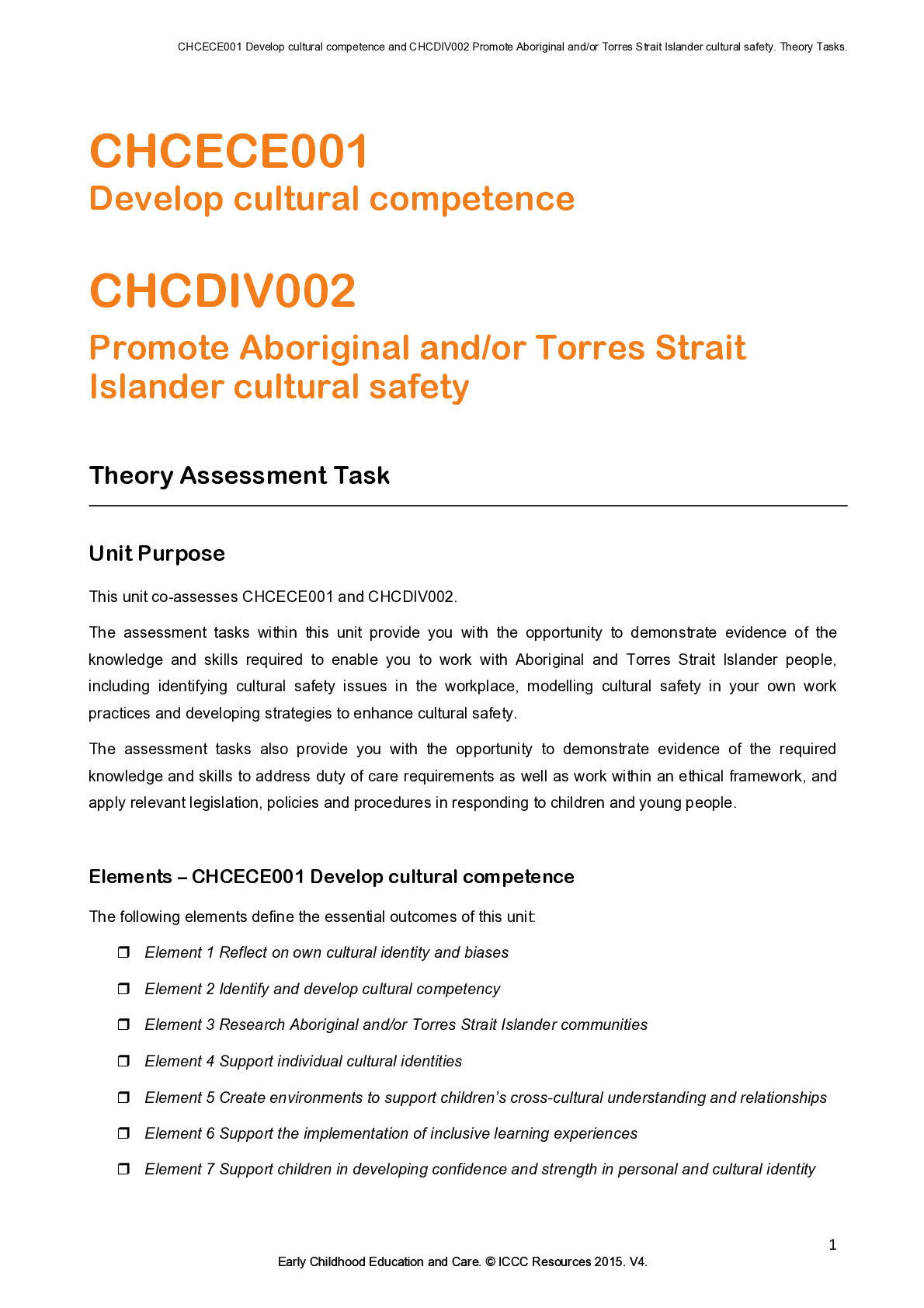
Reviews( 0 )
Document information
Connected school, study & course
About the document
Uploaded On
Jan 10, 2021
Number of pages
43
Written in
Additional information
This document has been written for:
Uploaded
Jan 10, 2021
Downloads
1
Views
74







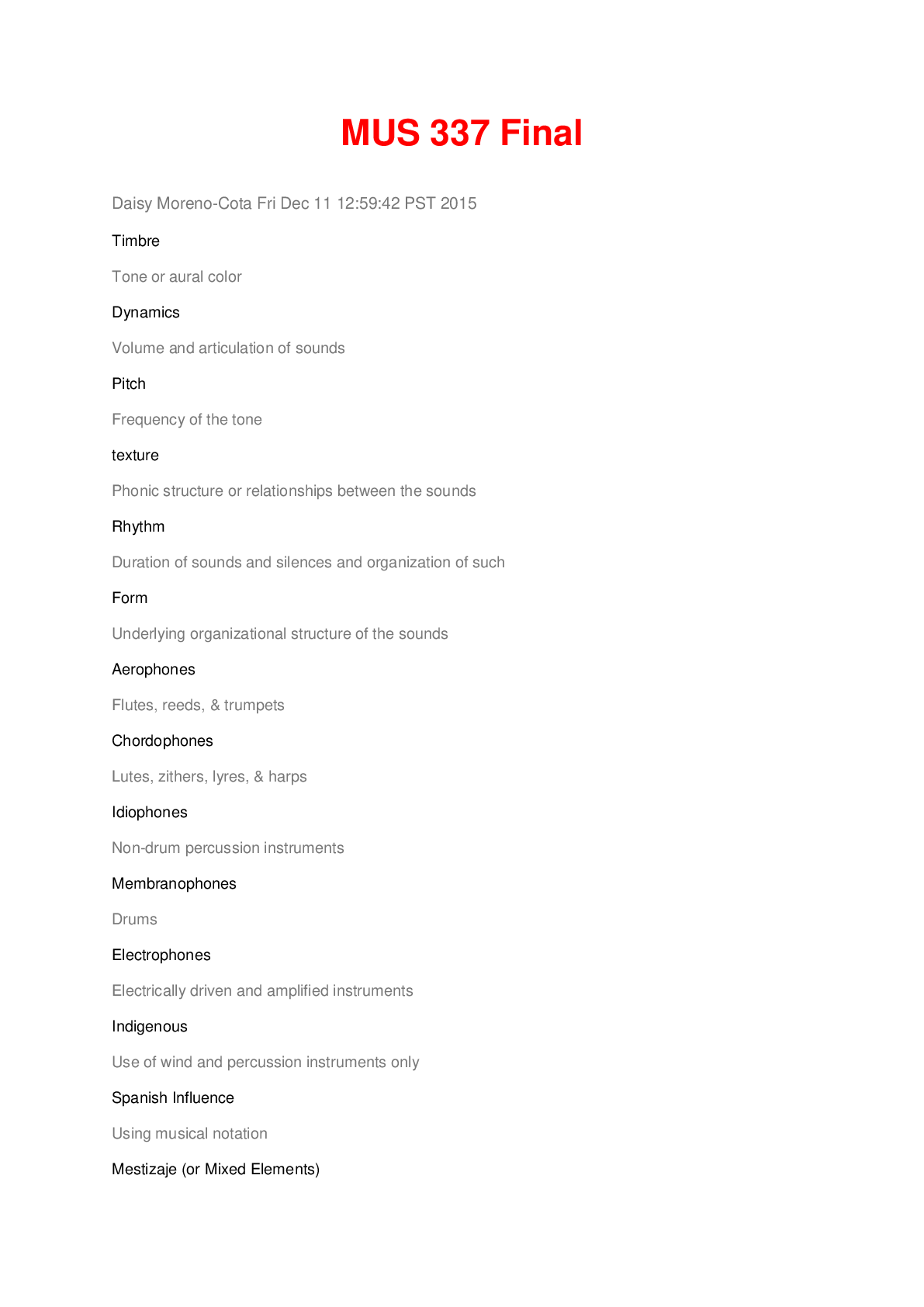




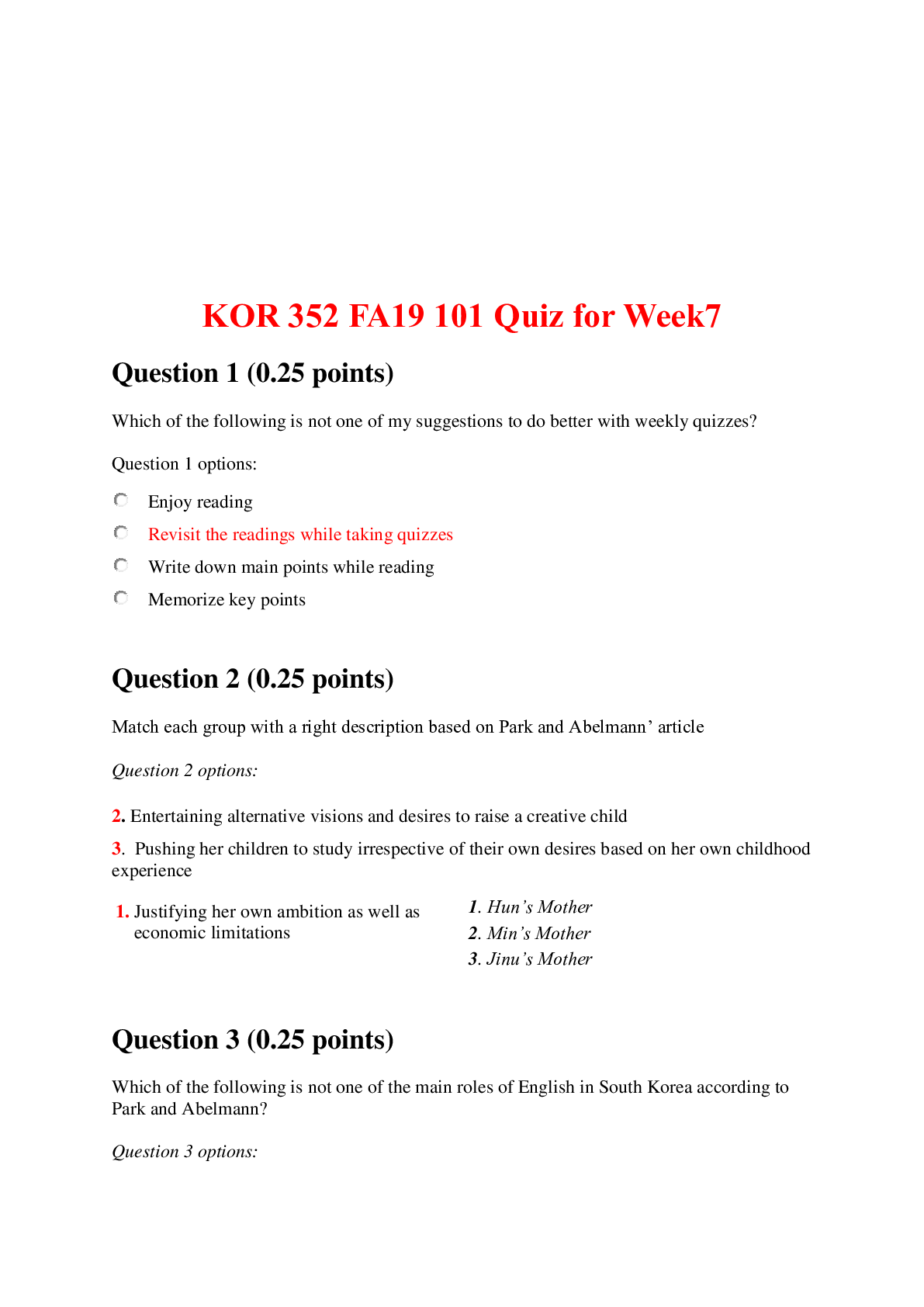


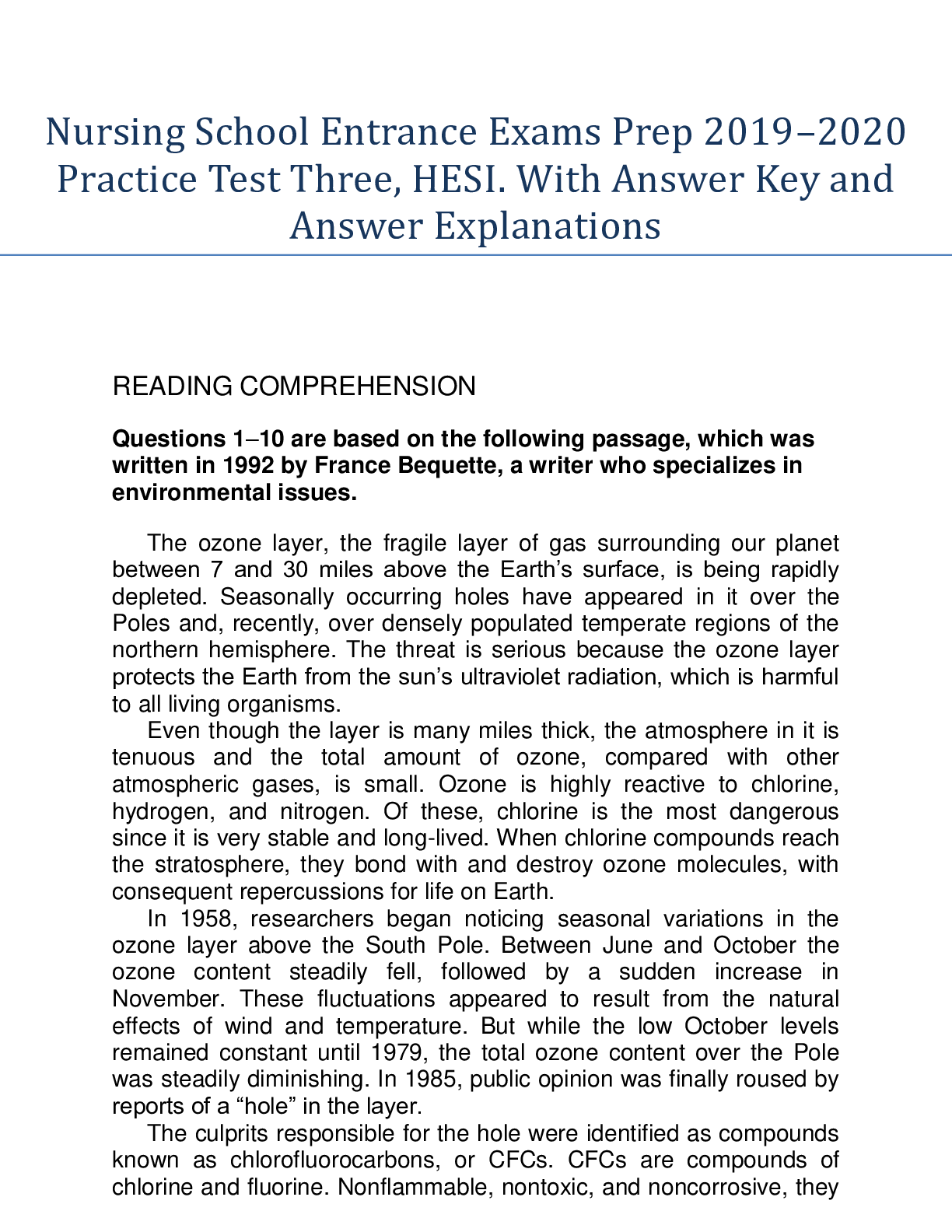
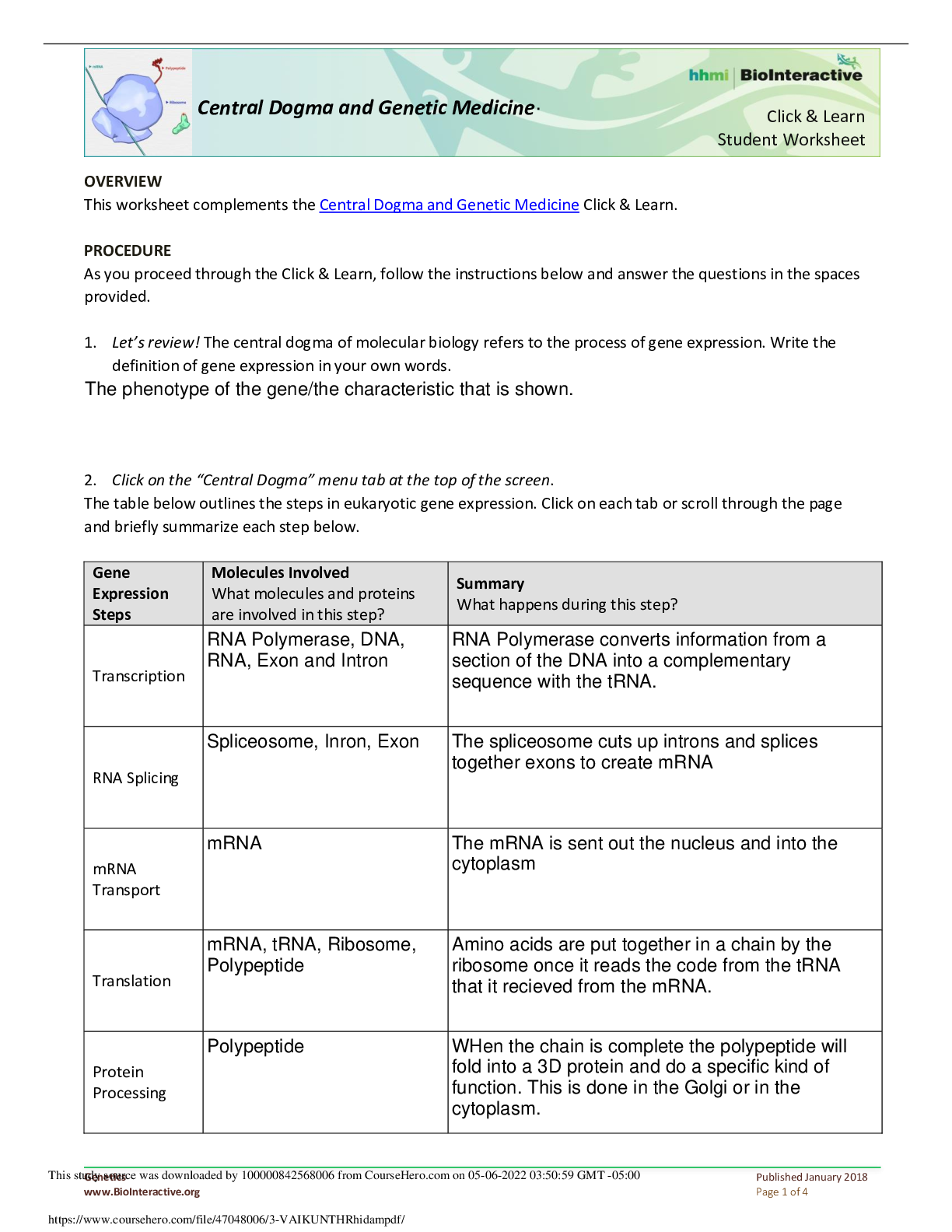
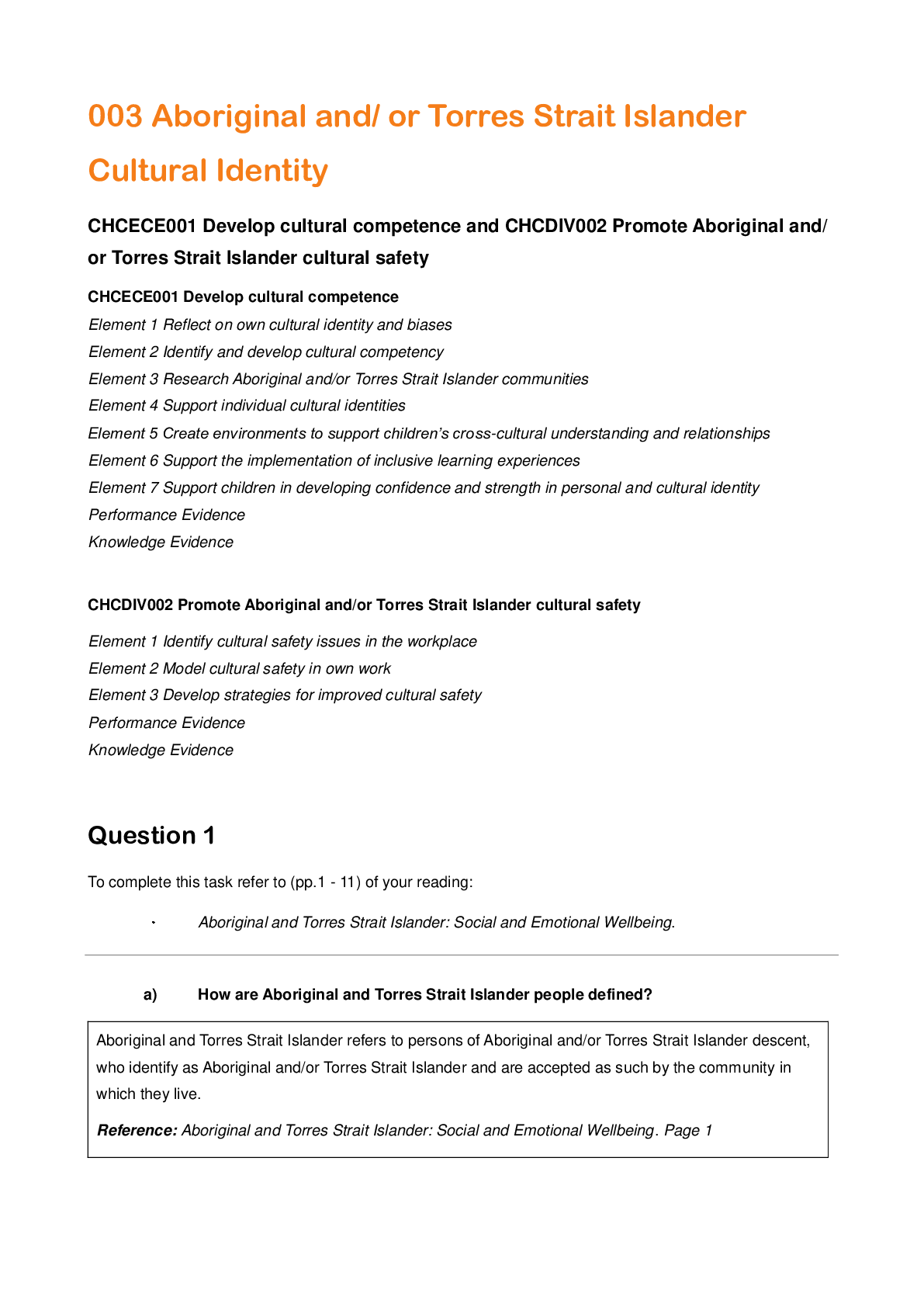
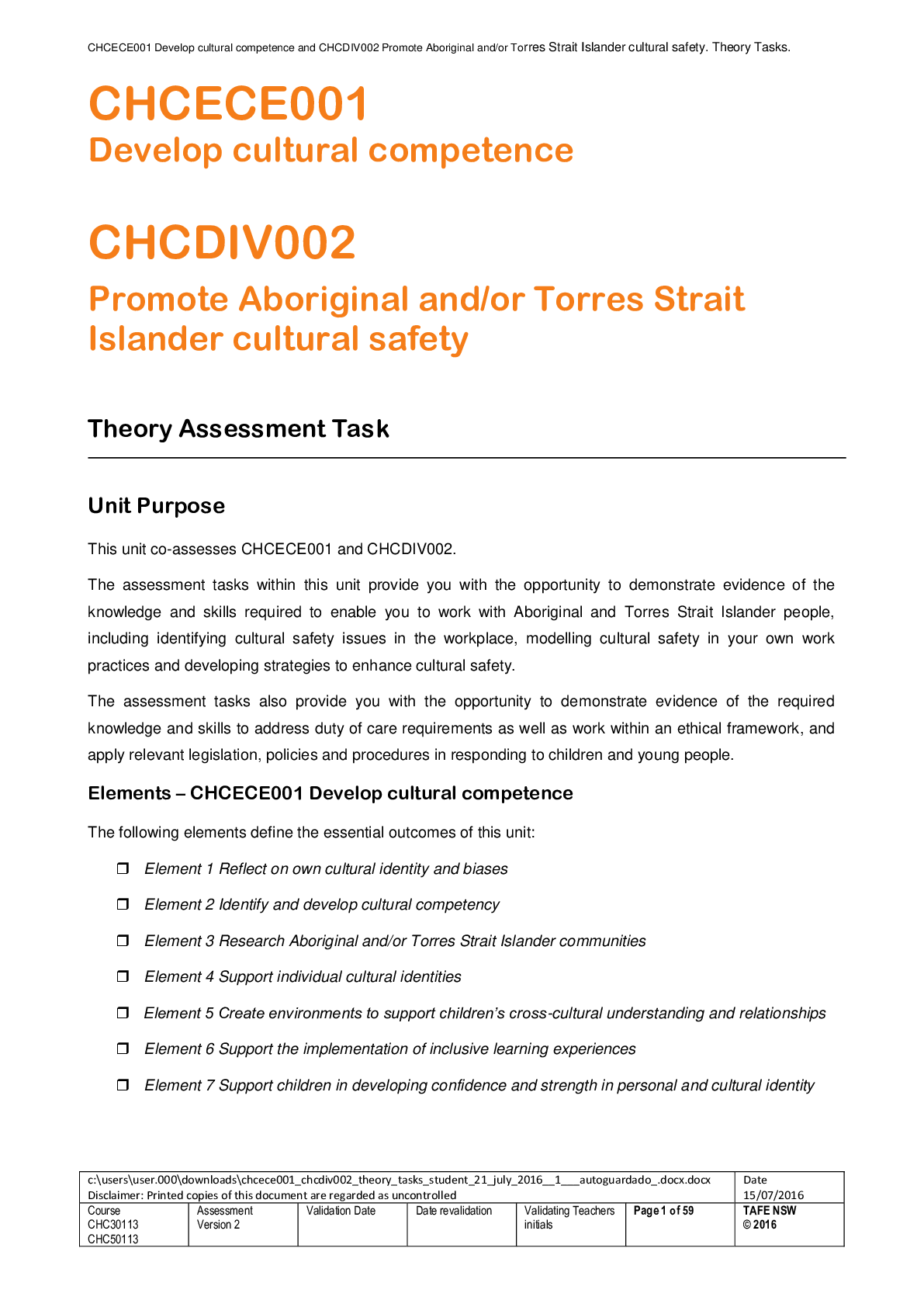
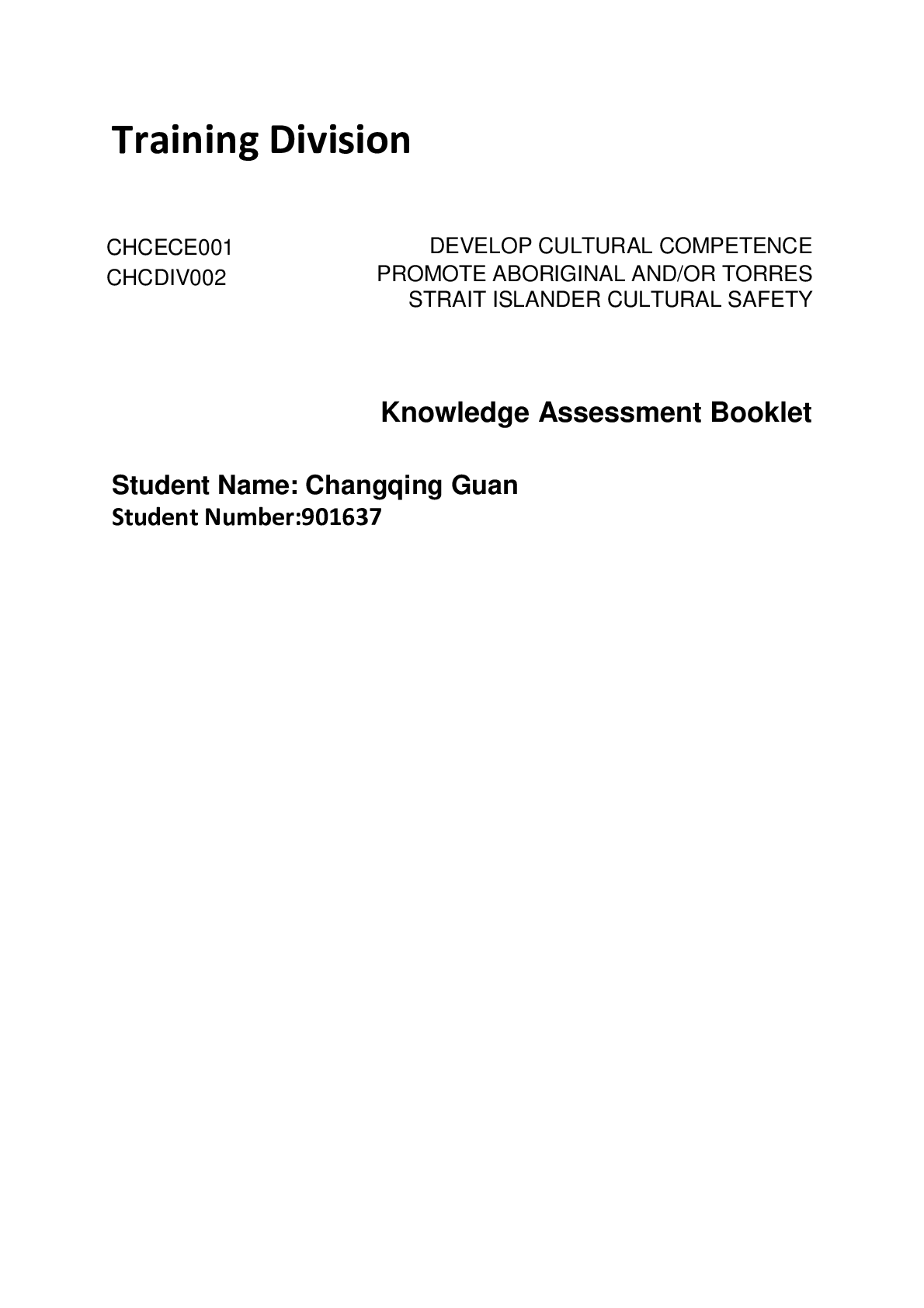


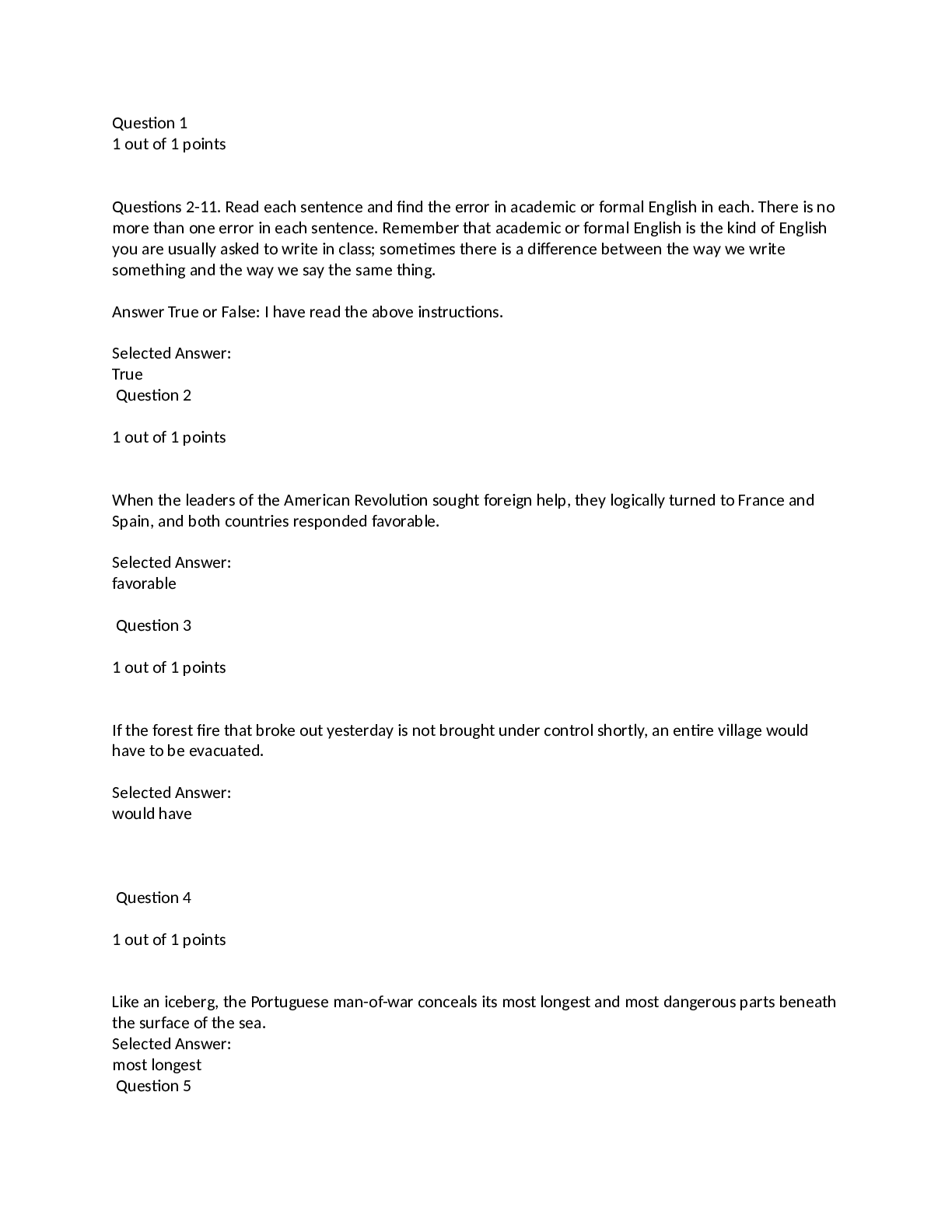
.png)
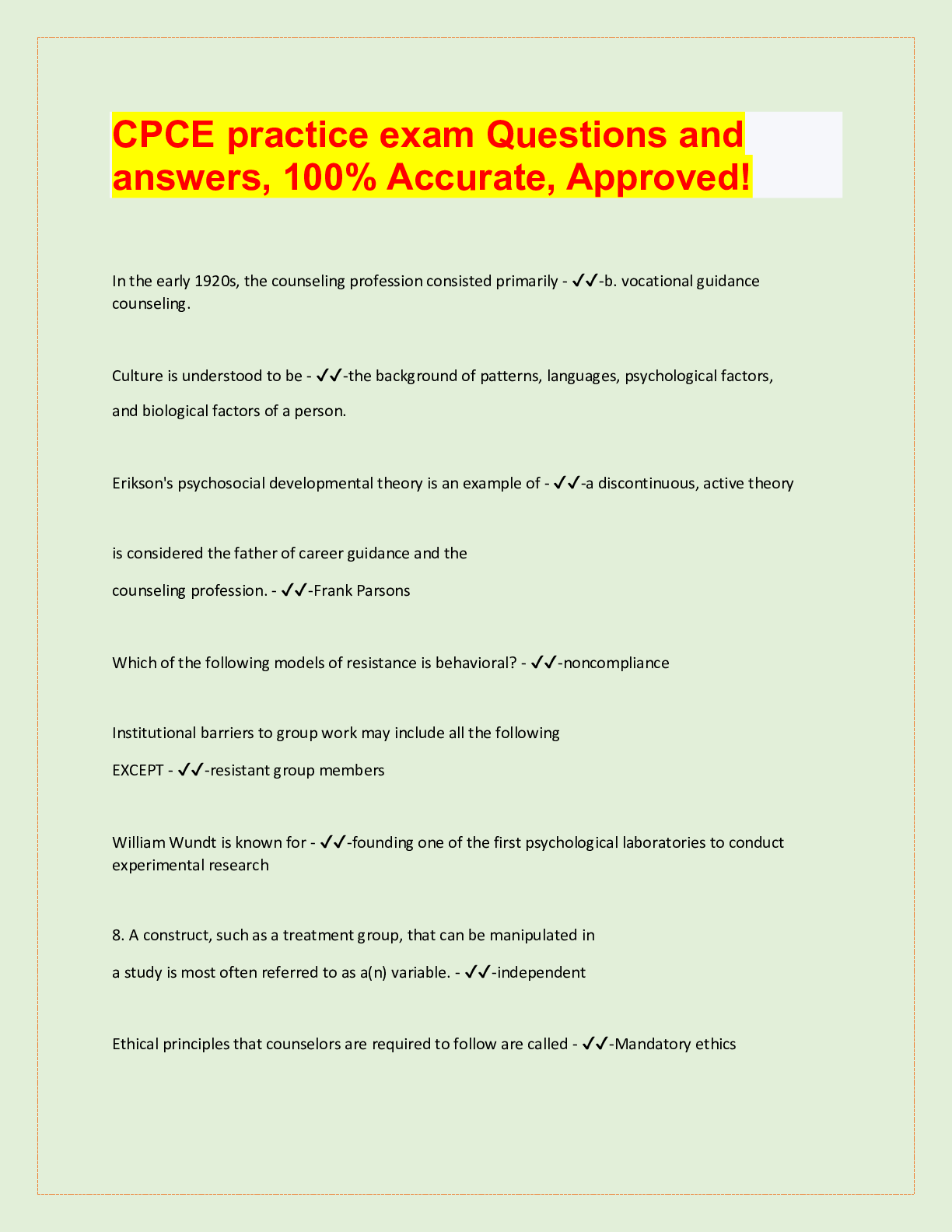
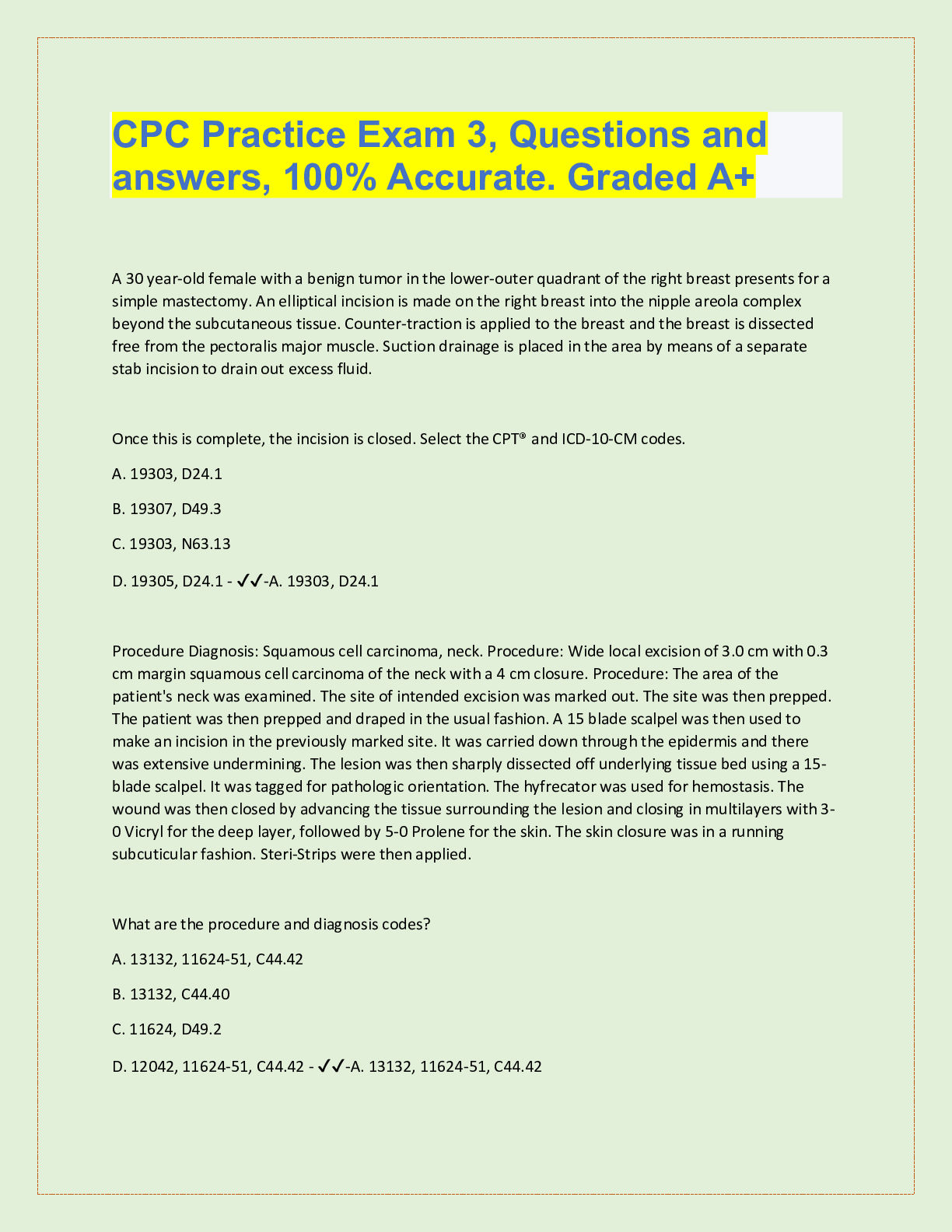
.png)


.png)


.png)

.png)

